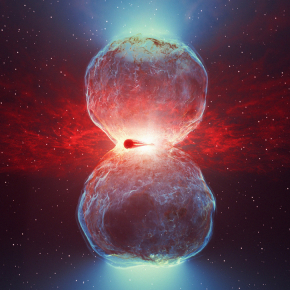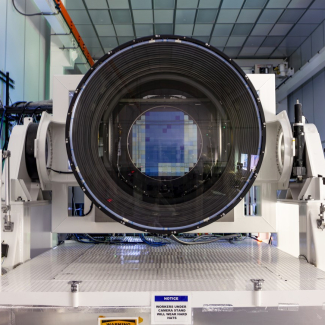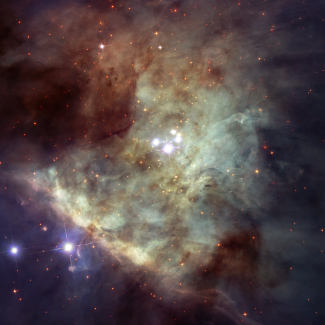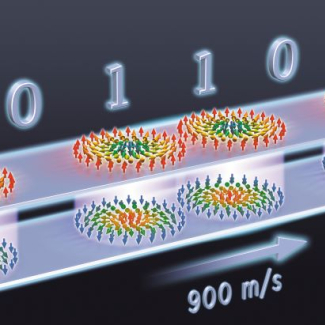
First ever observation of a record acceleration of cosmic particles in a nova
|
|
Novae are powerful explosions on the surface of a white dwarf in a binary star system. They generate shock waves that tear through the surrounding medium, pulling particles along with them and accelerating them to extreme energy levels. Now, researchers at the H.E.S.S. facility in Namibia, including scientists from the CNRS and CEA, have for the first time observed this acceleration process in very-high-energy gamma rays. Their findings, published on line in the journal Science on 10 March 2022, show that the nova RS Ophiuchi causes particles to accelerate to energies reaching the theoretical limit.
The white dwarf RS Ophiuchi is a recurrent nova: it accretes material from the companion star that orbits around it, which eventually produces a powerful explosion on the white dwarf's surface every 15 to 20 years. When the nova exploded in August 2021, the telescopes of the H.E.S.S.1 collaboration were able to observe the process in very-high-energy gamma rays for the first time.
The research group2 observed that the particles were accelerated to energies several hundred times higher than those previously seen in novae, reaching energies close to the maximum predicted by theoretical models. This particularly efficient acceleration is thought to be due to the white dwarf's extremely powerful magnetic field, augmented by cosmic rays retroaction upstream of the shock.
The researchers were able to measure the very-high-energy gamma rays produced by RS Ophiuchi's nova up to one month after the explosion. This is the first time that scientists have been able to fully observe the development of a nova, enabling them to study the acceleration of cosmic particles as if they were watching a film. The success of the observation was in no small part due to the rapid reaction of the scientists after an amateur astronomer first reported the nova.
These new measurements in very-high-energy gamma rays provide unprecedented information that should help provide insight into how such cosmic explosions work, and how they contribute to the fact that cosmic rays are found everywhere in space. They should also help us better understand other far more extreme cosmic explosions, including supernovae, which may be the seat of equally efficient particle acceleration.
This is a new breakthrough in gamma ray astronomy, and an encouraging sign that it will be possible to use H.E.S.S. and future gamma-ray telescopes3 to study many more cosmic explosions, as they may well occur in many novae. Within the next few years, research should be able to determine whether this type of nova is unusual or not.
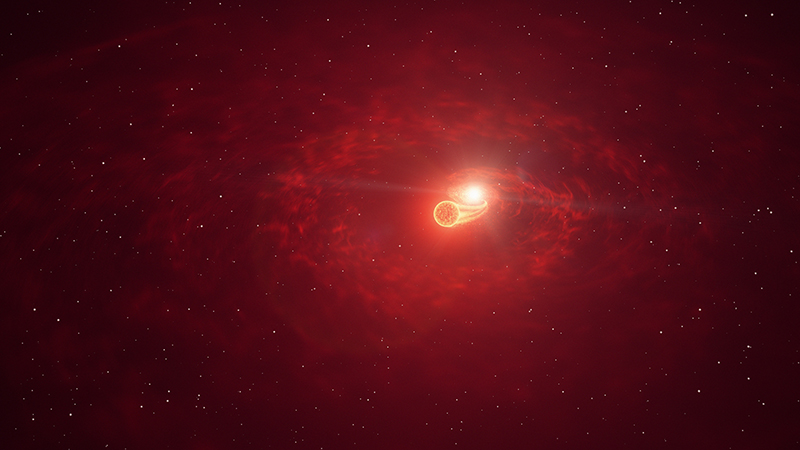
© DESY/H.E.S.S., Science Communication Lab
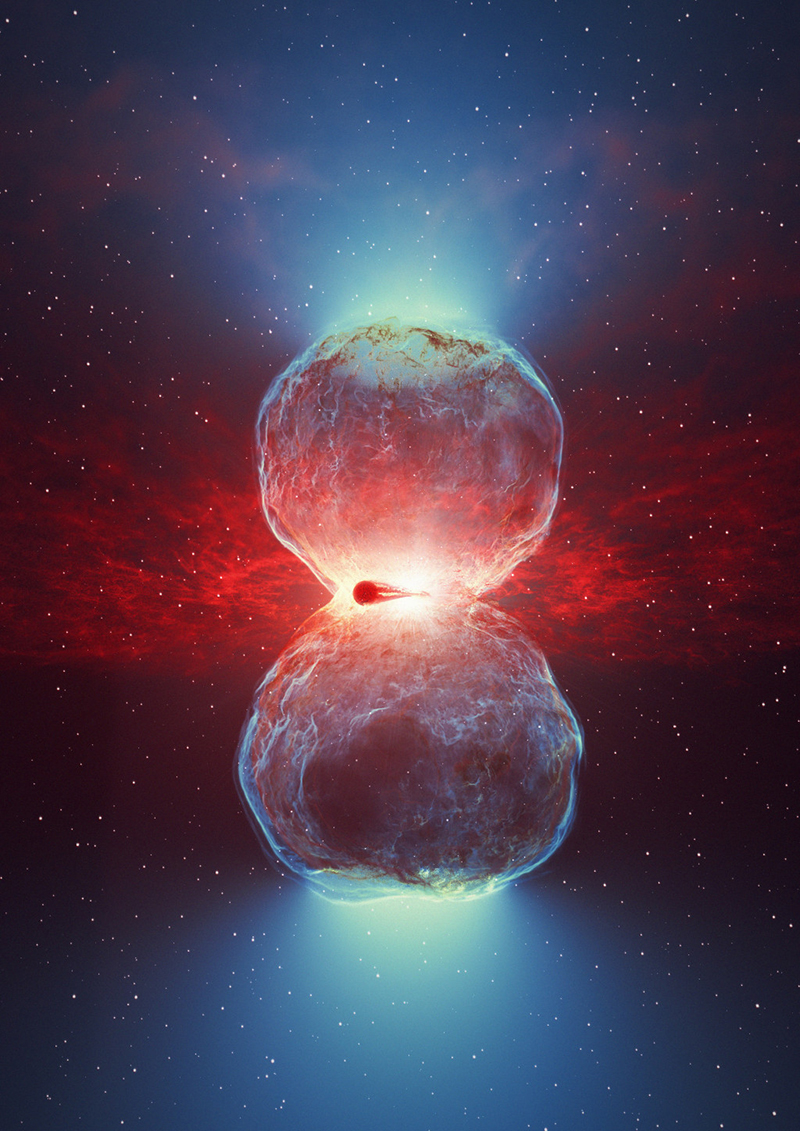
© DESY/H.E.S.S., Science Communication Lab
- 1More than 230 researchers from 41 institutes in 15 different countries are involved in the international H.E.S.S. collaboration and contributed to this work. H.E.S.S. is an array of five telescopes for the study of cosmic gamma rays. The telescopes are located in Namibia, near the high Gamsberg plateau, in a region known for its excellent optical properties. Four H.E.S.S. telescopes were commissioned in 2002/2003, while the fifth, much larger telescope, known as H.E.S.S. II, has been operational since July 2012 and extends energy coverage towards lower energies, at the same time further improving the sensitivity of the array.
- 2The teams in France that contributed to this work were from the Centre de Physique des Particules de Marseille (CNRS/Aix-Marseille Université), the Laboratoire Leprince-Ringuet (CNRS/Institut Polytechnique de Paris), the Laboratoire Astroparticule et Cosmologie (CNRS/Université de Paris), the Laboratoire Univers et Théories (Observatoire de Paris – PSL/CNRS), the Laboratoire de Physique Nucléaire et de Hautes Énergies (CNRS/Sorbonne Université), the Laboratoire d'Annecy de Physique des Particules (CNRS/Université Savoie Mont Blanc), the Laboratoire Univers et Particules de Montpellier (CNRS/Université de Montpellier), the Laboratoire de Physique des 2 Infinis de Bordeaux (CNRS/Université de Bordeaux), and CEA-IRFU.
- 3Such as the Cherenkov Telescope Array.
Revealing time-resolved particle acceleration in the recurrent Nova RS Ophiuchi. H.E.S.S. collaboration. Science, 10 March 2022. DOI:10.1126/science.abn0567
